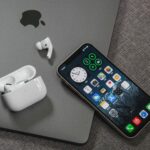The global smartphone market has matured, and the days of explosive iPhone growth are over. As the Apple growth narrative shifts away from hardware towards services, one opportunity remains underappreciated by investors. The healthcare industry is in the nascent stages of digital transformation and Apple is in a unique position to deliver greater efficiency to the healthcare stack, from pharmaceuticals and insurers right down to hospital facilities and clinics. By leveraging its vast iPhone installed base, its leadership in wearables and a proven services platform, Apple has the means to create a new standard for consumer-centric healthcare capable of disrupting a multi-trillion-dollar industry.
As far as opportunities go, healthcare is massive. According to the CMS, US healthcare expenditure was $3.5 trillion in 2017, or 3x the size of the $1.2 trillion global smartphone market and is forecast to grow to ~$6 trillion by 2027. A 2011 Journal of American Medical Association study found that between 21-47% of US healthcare expenditure was wasted spend, which at the midpoint implies up to $1.2 trillion of annual waste – the same size as the global smartphone market – growing to over $2 trillion by 2027. Morgan Stanley estimates that if Apple can reduce waste spend by just 15%, in-line with other sectors disrupted by digital platforms (e.g. Online Travel Agents in the travel industry), and capture 30% of that efficiency improvement in-line with the current App Store take rate, there is a $90 billion annual revenue opportunity for Apple by 2027.
The size of the opportunity means that several big technology companies are pursuing healthcare initiatives, but we believe there is enough room for multiple winners and Apple has some unique competitive advantages over its technology peers. For starters, Microsoft appears to be pursuing the enterprise opportunity, Google is focused on life sciences and AI, and Amazon on enterprise and pharmacy delivery. Amazon, JPMorgan and Berkshire Hathaway have also formed a JV, Haven, to deliver better care and lower healthcare costs to their employees.
Only Apple is focused on the consumer as an individual with its medical grade wearables and electronic medical record (EMR) initiatives. Apple’s expertise in hardware and custom silicon – it has 900 million active iPhones globally – gives it a commanding lead in the development of medical grade consumer wearables. Its Health app already pulls information on allergies, clinical vitals, conditions, immunisations, lab results, medications and procedures from over 200 healthcare providers, and provides greater healthcare data interoperability. Finally, its staunch stance on data privacy will come to the fore given the sensitive nature of healthcare data and recent failures by competitors to protect user data.
Of course, it is all well and good to speculate about hundred-billion-dollar opportunities years out in the future, but how does Apple get from here to there? Over the last 5 years since the introduction of HealthKit, Apple has built the foundations of a healthcare ecosystem. In addition to HealthKit, which enables the flow of health information between an iPhone user’s Health app and other apps, Apple has also launched Research Kit, used by medical researchers to turn iOS apps into tools for medical research/studies, and CareKit, which allows health providers to create care plans for the user, track symptoms and connect to care teams. On the hardware side Apple is on its fourth generation of Apple Watch, which is one of the first mass-market medical grade consumer wearables to receive FDA clearance to administer electrocardiograms and detect atrial fibrillation. And in terms of partnerships, Apple has partnered with health insurers (Aetna, UnitedHealthcare) to subsidise the Watch and develop health care apps, and launched research studies with Johns Hopkins University, NYU Langone medical Centre, Stanford Medicine, Johnson & Johnson and others.
This is not to say that Apple’s healthcare push is a sure bet. These early investments and initiatives are about laying the foundations of a healthcare ecosystem and building engagement with healthcare industry stakeholders. Because of how early (and conceptual) these initiatives are, they likely don’t drive a material revenue, let alone profit, contribution, and thus investors are understandably ambivalent towards Apple’s progress here. Then there is the issue of monetisation – how does Apple monetise this healthcare ecosystem beyond what it is currently doing? Stay tuned for Part 2 where we explore possible monetisation options and potential catalysts that could ignite investor interest in this substantial opportunity.
Montaka owns shares in Apple
![]() Daniel Wu is a Research Analyst with Montaka Global Investments. To learn more about Montaka, please call +612 7202 0100.
Daniel Wu is a Research Analyst with Montaka Global Investments. To learn more about Montaka, please call +612 7202 0100.




